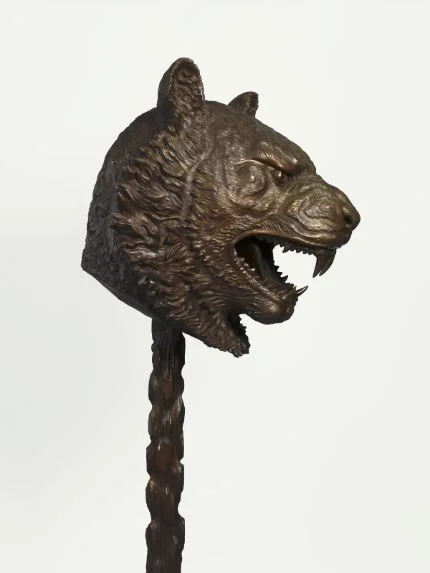by Morgan Rigaud
Condition has a significant impact on the value of mid-century modern furniture.
How important is condition? In determining the value of 20th century furniture and design, condition is one of the most important variables assessed by the appraiser. Though many 20th century furnishings possess forms that embrace and echo their industrial origins, these designs were created with what were then considered experimental materials. Rubbers, plastics, molded plywoods, and coated metals that were once embraced for their potential durability are now known to be quite fragile and delicate. Continually monitoring the condition of your mid-century modern furniture and collectibles is crucial to preserving their value. Here’s how you can identify common condition issues that affect the value of mid-century modern furniture.
Carefully inspect the physical state of the object.
Examine the item from every perspective. Above it, underneath it, front, back, and 360 degrees around the object. Look for overall structural stability and closely examine connections and joints.
- Are any components loose?
- Do you see yellowed glues from old repairs?
- Are joined pieces beginning to separate?
- Are all of the parts intact?
- Do you see mismatched or missing hardware?
- Do the finishes match?
- Is the veneer chipped or missing?
Look closely at the materials.
Do you see degradation, deterioration, or corrosion? Use this mnemonic for remembering the materials to examine closely when determining the condition of mid-century modern furniture:
My
Retro
Pieces
Fade
Fast
M is for METALS
Metals should have an even tone, with no areas of discoloration or pitting.
R is for RUBBER
Rubber should be sleekly contoured, with no cracks or deformities.
P is for PLASTICS
Plastics should be sound, without cracks or crazing, cloudiness or discoloration.
F is for FINISHES
Finishes should be without blisters, abrasions, evident water damage or bleaching due to sunlight.
F is for FABRICS
Fabrics should be sound, with minimal discoloration and fraying around the edges.
One of the fully restored mid-century-modern lounges at Valley Ho, a boutique hotel in Phoenix, Arizona that authentically embraces modernist design with its period furnishings from the 1940s, 1950s, and 1960s. A "must-see" for any MCM design aficionado.
In good condition, mid-century modern furniture can be valuable.
20th century furniture can be very valuable if it is structurally sound with no replaced or repaired components and there is no evidence of the degradation of materials. By monitoring the condition of your mid-century modern collectibles and taking care not to expose them to unnecessary damaging environmental conditions, you can help preserve their value and continue to enjoy eclectic and beautiful retro objects in your living space.






See how your items can be appraised online by our specialists on the smArt Appraisal platform by watching this video to see how it works.